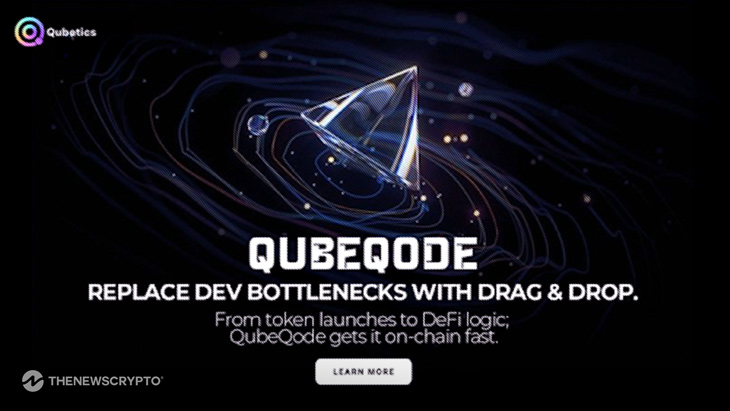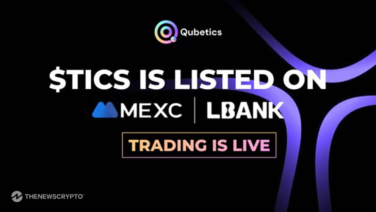Polkadot’s unique infrastructure is at the center of Web3 evolution. As a Layer-0 protocol with parachain architecture, it offers scalability, interoperability, and shared security across independent blockchains. This foundation makes it one of the most technically advanced ecosystems in crypto space.
DOT, the network’s native token, serves three major functions: governance, staking, and parachain slot leasing. These features give DOT value beyond speculation, linking it to active network participation. Despite this, DOT’s price has fallen significantly from its all-time high of over $50, now hovering around $3.50 in mid-2025.
Polkadot is currently navigating a broader market downturn, but its developer community remains one of the strongest. Over 800 full-time developers contribute to the network. The number of active parachains is growing, and on-chain messaging systems such as XCM and XCMP are becoming more robust.
Polkadot Price Prediction 2026: Analysts See Gradual Climb Toward $8
According to Changelly’s projections, DOT could average $7.41 by the end of 2026, with highs reaching $8.54 in December. This model is built on Polkadot’s expanding use case as a scalable framework for interconnected blockchain ecosystems. The forecast implies a 100–120% increase from current levels.
CoinCodex offers a more cautious scenario, placing DOT between $3.50 and $4.13 throughout 2026. This view assumes modest adoption and limited price acceleration, which may occur if new parachain slots and applications fail to generate significant market excitement.
More optimistic views, like those from InvestingHaven, predict prices as high as $10.22, with potential breakout levels up to $27 if macro conditions align and ecosystem activity surges. These estimates reflect historical recovery patterns from deeply oversold zones.
DOT’s 2026 performance will depend on several tangible drivers. The launch of Agile Coretime, which introduces more flexible parachain slot access, could enhance utility. Continued adoption of XCM for cross-chain operations and greater DeFi participation could also strengthen token demand.
Key Catalysts Driving DOT’s Outlook
Polkadot’s core strength lies in modularity. The protocol allows parachains to optimize for specific purposes, such as privacy, gaming, or finance. This flexibility reduces network congestion and increases throughput, with tests showing potential speeds exceeding 600,000 transactions per second.
Additionally, the relay chain model reduces redundant computation and enhances finality. Upgrades like asynchronous backing and JAM (Join Accumulate Machine) aim to improve latency and execution. These developments are critical for maintaining competitiveness against Ethereum Layer-2s and rival modular platforms.
Increased staking participation and on-chain governance are other pillars of long-term sustainability. DOT holders actively shape protocol upgrades, and the network’s treasury supports grants for developers and infrastructure builders. These features contribute to token demand and ecosystem resilience.
Risks That May Limit Growth Potential
Despite its strengths, DOT is not without risk. Competition from chains like Celestia, Cosmos, and Ethereum’s rollup-centric roadmap continues to grow. If Polkadot fails to attract top-tier dApps or major enterprise use cases, its long-term value proposition may weaken.
Technical complexity also creates a learning curve for developers, and governance fragmentation could slow major decisions. External factors, such as unfavorable regulation or a prolonged bear market, could suppress DOT’s price regardless of technological progress.
Polkadot’s reliance on parachain slot auctions may also limit accessibility for smaller projects, potentially slowing innovation. If Coretime leasing doesn’t gain traction, the network could face underutilization.
For these reasons, the $8 target should be treated as a scenario, not a guarantee. It assumes moderate success in parachain expansion, strong governance participation, and general crypto market recovery.
Qubetics: Building Infrastructure for the Developer Economy
Qubetics is quickly emerging as one of the most utility-focused blockchain projects in the market. At its core are two groundbreaking tools: QubeQode and the Qubetics IDE. QubeQode is a multi-layered, decentralized development engine. It empowers developers to launch, test, and manage smart contracts without the bottlenecks seen in legacy environments. Its multi-VM compatibility streamlines dApp deployment while reducing friction across chains.
The Qubetics IDE integrates debugging, simulation, and real-time analytics into one powerful interface. This all-in-one platform enables seamless creation of DeFi applications, NFT platforms, and enterprise-grade tools. For developers looking to move quickly in a secure, stable environment, Qubetics is solving real problems.
With blockchain adoption still early in many sectors, tools like QubeQode are essential. They support composability and interoperability, accelerating the pace at which new blockchain products can enter the market. This positions Qubetics as a backbone for future digital economies.
Qubetics Presale Performance: Returns and Scarcity Shape Demand
Qubetics is in Stage 37 of its crypto presale, offering $TICS tokens at $0.3370. The project has raised over $18 million, with more than 516 million tokens sold to over 28,100 holders. Only 10 million tokens remain at this stage, creating urgency among prospective adopters.
The listing price is set at $0.40, delivering an immediate 20% upside for participants at the current stage. Tokenomics have been optimized for long-term performance. The total supply has been slashed by over 66%, capping it at 1.36 billion. This creates scarcity in an environment where demand is visibly rising.
What’s notable is the public allocation of 38.55%. Qubetics is prioritizing community inclusion, and this has attracted interest from developers and early supporters alike. At full valuation, a $1,000 stake today could yield between $15,000 and $30,000 if adoption meets projections. A $10,000 entry could transform into $300,000 under aggressive valuation models.
These projections are not speculative hype but built on performance indicators and platform use cases. As more developers begin building on Qubetics, the value of $TICS tokens may reflect true ecosystem traction.
Final Thoughts
Polkadot is engineering a comeback built on technical strength, developer loyalty, and a maturing multi-chain framework. While market sentiment remains cautious, core fundamentals are improving. With projections ranging from $4 to $10, 2026 could mark a period of stabilization and growth if key upgrades deliver.
Qubetics represents a different momentum stream. It focuses on the developer economy, offering the tools and environment required for scalable dApp innovation. Its presale metrics, revamped supply structure, and developer adoption give it immediate relevance.
Both projects offer distinct yet complementary narratives in the Web3 evolution. One seeks to empower infrastructure interoperability; the other enables streamlined creation within that framework. Together, they showcase how utility, scalability, and timing can define the next phase of crypto adoption.
For More Information:
- Qubetics: https://qubetics.com
- Presale: https://buy.qubetics.com/
- Telegram: https://t.me/qubetics
- Twitter: https://x.com/qubetics
Disclaimer: TheNewsCrypto does not endorse any content on this page. The content depicted in this Press Release does not represent any investment advice. TheNewsCrypto recommends our readers to make decisions based on their own research. TheNewsCrypto is not accountable for any damage or loss related to content, products, or services stated in this Press Release.








